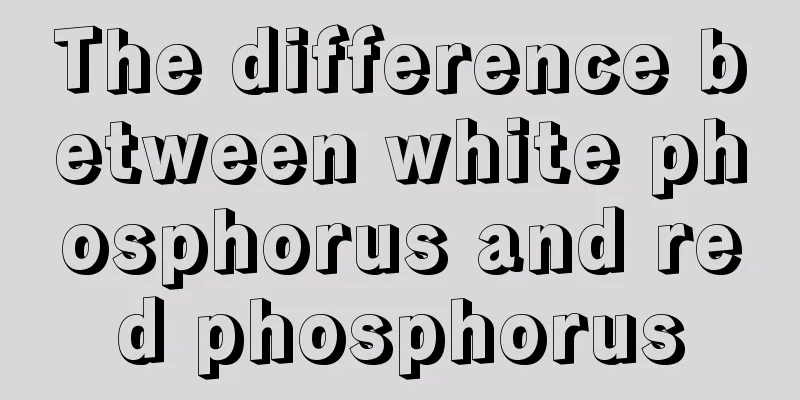How to treat wind-cold and wind-heat symptomatically?

|
Traditional Chinese medicine focuses on the study of Qi and blood in the human body, so many people now often have some physical diseases, including symptoms. Traditional Chinese medicine will attribute our body to other factors, so the health of Qi and blood and the recovery of the body are all identified by traditional Chinese medicine. Wind-cold and wind-heat are very common diseases at present. Wind-cold and wind-heat are mainly due to the invasion of wind evil, which causes physical weakness and is accompanied by lung heat, which can easily cause this disease. Patients will mainly show nasal itching, clear nasal discharge, cough and sputum, and sometimes even soreness and weakness in the limbs, and poor circulation of Qi and blood throughout the body. In this case, it is necessary to use traditional Chinese medicine to choose the appropriate conditioning method according to the manifestation of symptoms and the combination of symptoms. What is the cause of wind cold and wind heat? Traditional Chinese medicine believes that colds are caused by wind evil invading the lungs and skin when the body's defenses are insufficient. During the four seasons, if the climate is abnormal, such as spring should be warm but is cold, and summer should be hot but is cold, etc., the wind evil can easily invade the human body and cause a cold, or even cause an epidemic cold. Although the main cause of colds is wind evil, there are often other complications. Clinically, wind-cold and wind-heat are the most common syndromes. In addition, seasonal heat, dampness, and dryness can also cause mixed reactions and lead to illness. Therefore, there are different concurrent symptoms such as heat, dampness, and dryness. In addition to the invasion of wind evil, colds are also related to physical weakness and different constitutions. If there is phlegm and heat in the lungs, this disease is also likely to occur. The main site of invasion of wind evil is the lung defense, and the systemic symptoms of seasonal colds are more obvious because they are more susceptible to seasonal evil. The elderly and weak have poor ability to resist external pathogens, and external pathogens can enter the body from the outside and cause other diseases. This disease is generally characterized by excess syndrome. For example, if the body is weak and attacked by pathogens, it is a syndrome of deficiency of the root and excess of the superficial symptoms. External wind cold Symptoms: Heavy stuffy nose, itchy nose, sneezing, clear runny nose, cough with clear and thin sputum, or even fever, chills, headache without sweating, limb aches, thin white tongue coating, and floating and tight pulse. Treatment principle: pungent and warm to relieve exterior symptoms, clear the lungs and dispel cold Prescription: Jingfang Baidu Powder Schizonepeta, Saposhnikovia, Bupleurum, Ligusticum chuanxiong, Fructus Aurantii Immaturus, Notopterygium wilfordii, Angelica dahurica, Poria, Platycodon grandiflorum, Peucedanum peucedanum, and Licorice. Add or subtract: If the wind-cold is more severe, add ephedra and cinnamon twig; For those with severe cough and sputum, add almond and Fritillaria thunbergii. Wind-cold and dampness Symptoms: aversion to cold and little sweating, heavy head, soreness and pain in limb joints, heavy cough, nasal congestion and runny nose, greasy white tongue coating, and weak pulse. Treatment principle: Dispel wind and dampness, dispel cold and relieve exterior symptoms. Prescription: Qianghuo Shengshi Decoction Qianghuo, Duhuo, Ligusticum chuanxiong, Saposhnikovia divaricata, Licorice root, Chuanxiong, and Vitex rotundus. Add or subtract: if there is no sweating, add Doujuan and Atractylodes; If there is a lot of phlegm, add Pinellia ternata and Tangerine Peel. Exogenous wind-heat Symptoms: fever, aversion to wind, or slight aversion to cold, headache, nasal congestion and runny nose, cough with yellow sputum, dry mouth, red, swollen and painful throat, red edges and tip of tongue, thin yellow tongue coating, and floating and rapid pulse. Treatment principle: Spicy and cool to relieve exterior symptoms, promote lung function, disperse heat and clear away heat. Prescription: Yinqiao Powder Honeysuckle, forsythia, platycodon, mint, bamboo leaves, raw licorice, mustard spike, light black beans, burdock seeds, and fresh reed roots. Add or subtract: If nasal congestion and headache are obvious, add Xanthium sibiricum, Magnolia officinalis, and Angelica dahurica; For severe pharyngitis, add Radix Glycyrrhizae, Puffball, and Radix Isatidis. If thirst is severe, add Radix Trichosanthis; if heat is severe, add Radix Scutellariae. Wind-heat and dryness Symptoms: fever, slight aversion to wind and cold, dry nasopharynx, cough with no or little sputum, headache and body pain, dry mouth and thirst, red tongue with little fluid, and floating and rapid pulse. Treatment principle: dispel wind and heat, moisten dryness and relieve cough Prescription: Yinqiao powder combined with Sangxing decoction Honeysuckle, forsythia, bamboo leaves, schizonepeta spike, burdock seeds, mint, light black beans, licorice, platycodon, reed roots, mulberry leaves, almonds, adenophora, elephant shells, gardenia peels, and pear peels. Cold outside and hot inside Symptoms: chills without sweating, limb aches, irritability, cough and shortness of breath, hoarseness, sore throat, red tip of tongue with slightly yellow coating, and rapid pulse. Treatment principle: clear lungs and dispel cold, clear heat and relieve cough Prescription: Ma Xing Shi Gan Tang Ephedra, apricot kernel, gypsum, and licorice. Add or subtract: If the internal heat is severe, add Scutellaria baicalensis, Gardenia jasminoides, and Phragmites australis; if the cough is severe, add Peucedanum chinense and Morus alba bark; if the limb soreness is obvious, add Notopterygium wilfordii and Angelica dahurica. External heat and dampness Symptoms: fever with slight aversion to wind and cold, little sweat, soreness and pain in limbs, heavy and swollen head, cough with sticky phlegm, nasal congestion and runny nose, chest and abdominal distension, nausea and vomiting, sticky taste in the mouth, no thirst or not drinking much when thirsty, or irritability, or uncomfortable bowel movements, red urine, yellow and greasy tongue coating, and weak and rapid pulse. Treatment principle: Clear away heat and dampness, promote lung function and relieve exterior symptoms. Prescription: Wuwei Xiangru Drink with added ingredients Elsholtzia, lentil, Magnolia officinalis, Poria cocos, licorice, Artemisia annua, Gardenia jasminoides, and fresh lotus leaves. Add or subtract: If the dampness is more severe on the surface, with severe limb soreness and dizziness, add Doujuan, Patchouli, and Cymbidium; if the dampness is more severe on the inside, with severe abdominal distension and vomiting, add Atractylodes, White Amomum villosum, Pinellia ternata, and Tangerine peel; if the internal heat is severe and the urine is short and red, add Liuyi Powder. |
<<: How is mumps virus transmitted?
>>: What are the nursing and diagnostic criteria for anxiety
Recommend
What are the main hazards of colon cancer?
Colon cancer is a malignant tumor, and its incide...
External genetic factors of renal cancer
It is unfortunate if someone has kidney cancer in...
Tea therapy for patients with brain cancer and epilepsy
Epilepsy is one of the common symptoms of brain c...
What causes small cell lung cancer
There are many causes of small cell lung cancer, ...
The difference between genetically modified soybeans and non-genetically modified soybeans, support non-genetically modified
Many foods nowadays are genetically modified, esp...
Freeze the mung beans before cooking
Mung beans can be frozen. When freezing, they wil...
How to prevent recurrence of clear cell testicular cancer
Patients with testicular cancer are in great pain...
What tests do you need to do if you have lymphoma
Maybe you are not very familiar with lymphoma, bu...
Does endometrial cancer affect life expectancy?
Endometrial cancer patients should not have a des...
Can I lose weight by not drinking water at night?
We all know that most of our body is water. If we...
Can a woman with colon cancer get pregnant?
Colon cancer is a common malignant tumor of the d...
What are the auxiliary drugs for liver cancer
Generally speaking, chemotherapy is not used alon...
What is the probability of inheriting lung cancer from the father?
What are the chances of my father inheriting lung...
What does fever in the late stage of gastric cancer indicate?
What does fever in the late stage of gastric canc...
What are the diagnostic methods for bladder cancer?
In recent years, bladder cancer has become one of...









